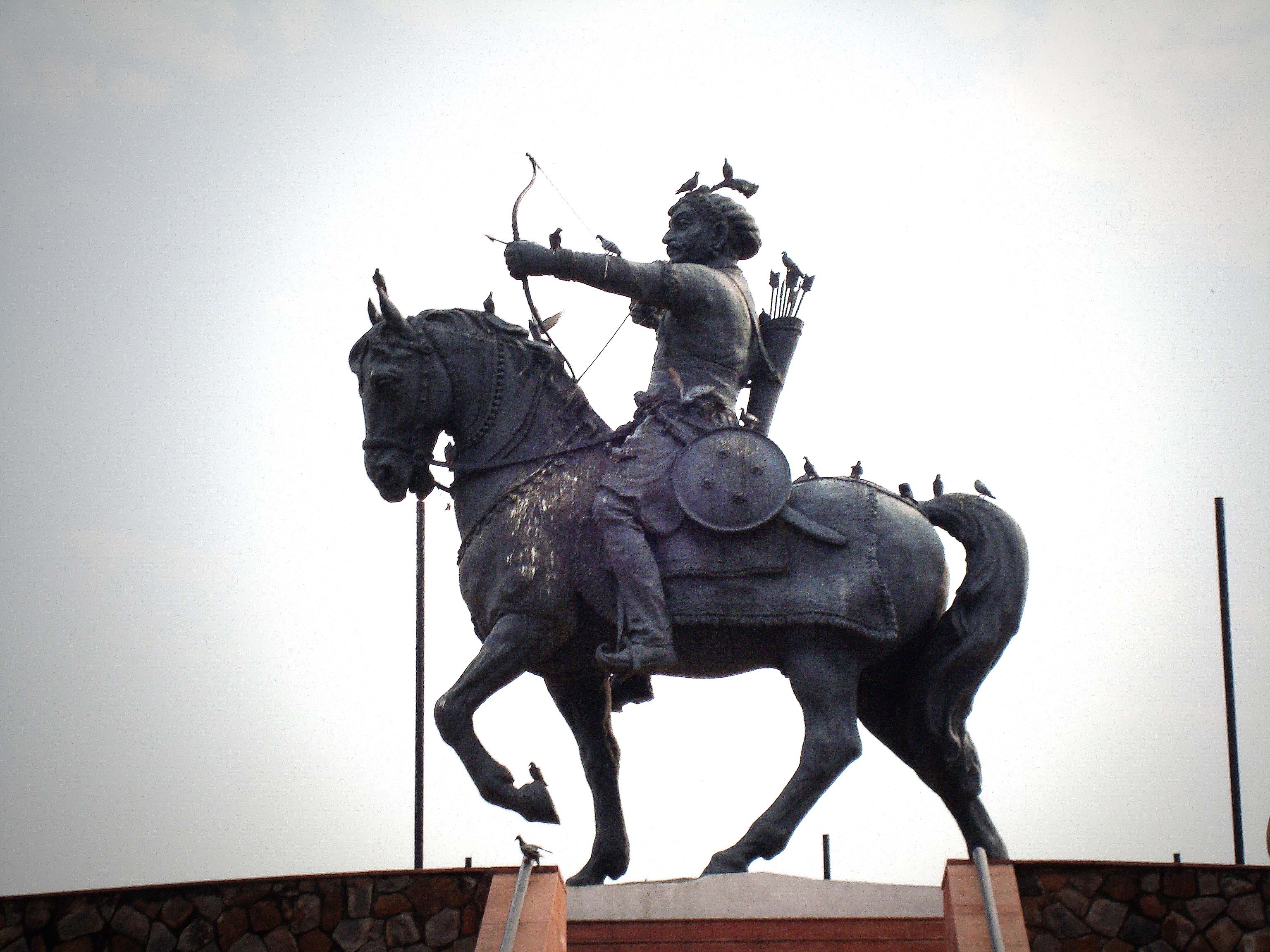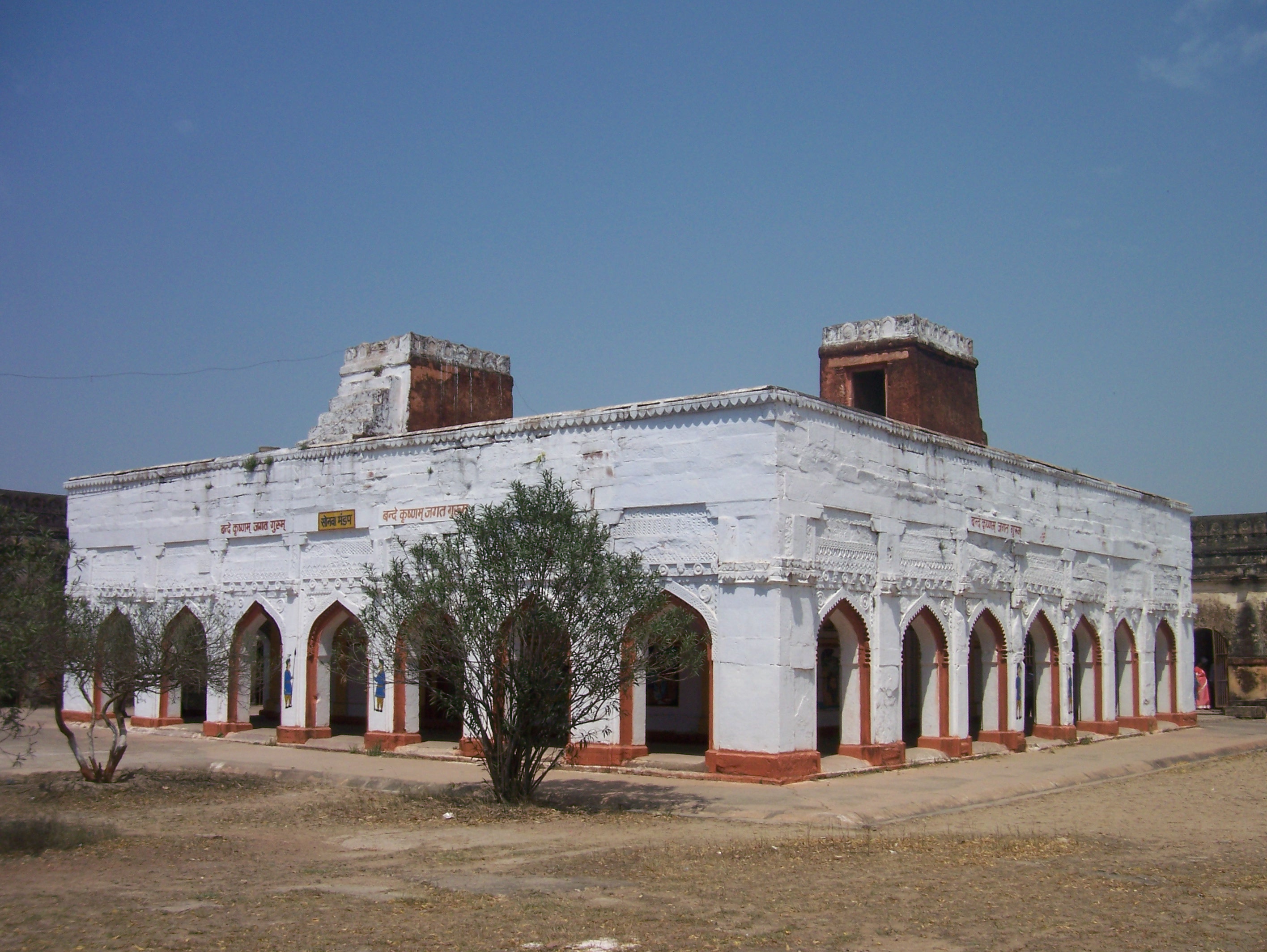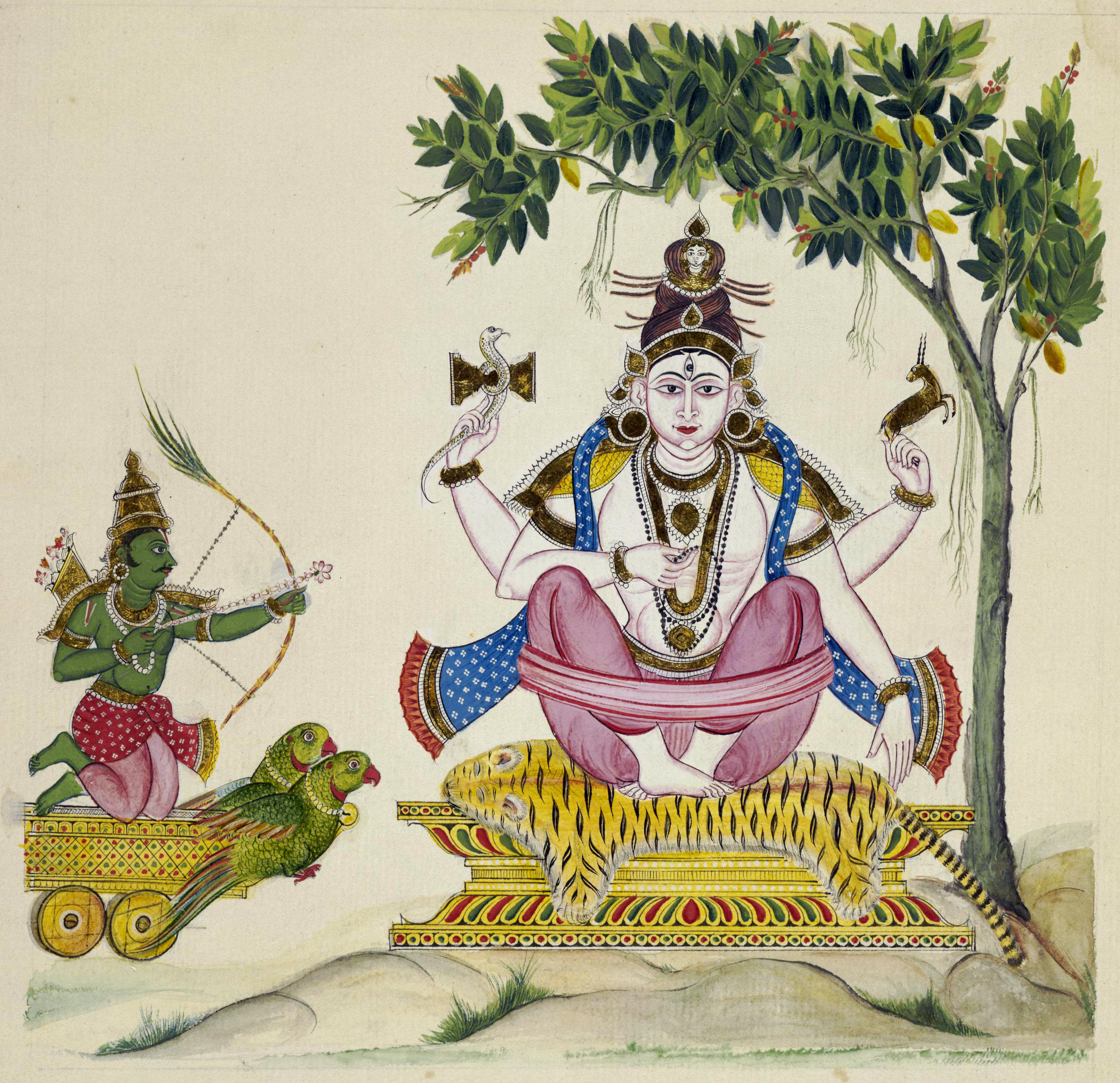|
Paramardi
Paramardi (reigned c. 1165–1203 CE) was a king of the Chandela dynasty of central India. He was the last powerful Chandela king, and ruled the Jejakabhukti region (Bundelkhand in present-day Madhya Pradesh and Uttar Pradesh). Around 1182–1183 CE, he was defeated by Prithviraj Chauhan, who raided the Chandela capital Mahoba. Paramardi managed to recover the Chandela power over the next few years, but was defeated by the Ghurid general Qutb ud-Din Aibak around 1202-1203 CE. Early life Paramardi's Bateshvar inscription suggests that he succeeded his father Yashovarman. However, other Chandela inscriptions (including those of his own) suggest that he succeeded his grandfather Madanavarman. It is possible that Yashovarman ruled for a very short period, or did not rule at all, having died while Madanavarman was still alive. According to the ''Parmal Raso'', Paramardi ascended the throne at the age of 5 years. An Ajaygarh inscription appears to corroborate this claim: it s ... [...More Info...] [...Related Items...] OR: [Wikipedia] [Google] [Baidu] |
Prithviraj Chauhan
Prithviraja III ( IAST: Pṛthvī-rāja; reign. – 1192 CE), popularly known as Prithviraj Chauhan or Rai Pithora, was a king from the Chauhan (Chahamana) dynasty who ruled the territory of Sapadalaksha, with his capital at Ajmer in present-day Rajasthan. Ascending the throne as a minor in 1177 CE, Prithviraj inherited a kingdom which stretched from Thanesar in the north to Jahazpur (Mewar) in the south, which he aimed to expand by military actions against neighbouring kingdoms, most notably defeating the Chandelas. Prithviraj led a coalition of several Rajput kings and defeated the Ghurid army led by Muhammad Ghori near Taraori in 1191 AD. However, in 1192 CE, Ghori returned with an army of Turkish mounted archers and defeated the Rajput army on the same battlefield. Prithviraj fled the battlefield, but was captured near Sirsa and executed. His defeat at Tarain is seen as a landmark event in the Islamic conquest of India, and has been described in several semi-lege ... [...More Info...] [...Related Items...] OR: [Wikipedia] [Google] [Baidu] |
Chandela
The Chandelas of Jejakabhukti was an Indian dynasty in Central India. The Chandelas ruled much of the Bundelkhand region (then called ''Jejakabhukti'') between the 9th and the 13th centuries. They belonged to the Chandel clan of the Rajputs. The Chandelas initially ruled as feudatories of the Gurjara-Pratiharas of Kanyakubja (Kannauj). The 10th century Chandela ruler Yashovarman became practically independent, although he continued to acknowledge the Pratihara suzerainty. By the time of his successor Dhanga, the Chandelas had become a sovereign power. Their power rose and declined as they fought battles with the neighbouring dynasties, especially the Paramaras of Malwa and the Kalachuris of Tripuri. From the 11th century onwards, the Chandelas faced raids by the northern Muslim dynasties, including the Ghaznavids and the Ghurids. The Chandela power effectively ended around the beginning of the 13th century, following Chahamana and Ghurid invasions. The Chandelas are well ... [...More Info...] [...Related Items...] OR: [Wikipedia] [Google] [Baidu] |
Yashovarman II (Chandela Dynasty)
Yashovarman (IAST: Yaśovarman; reigned c. 1164-1165 CE), also called Yashovarman II to distinguish him from the earlier Yashovarman I, was a member of the Chandela dynasty of central India. He is believed to have ruled the Jejakabhukti region (Bundelkhand in present-day Madhya Pradesh and Uttar Pradesh) for a short period. Yashovarman was a son of the Chandela king Madanavarman Madana-Varman (reigned c. 1128–1165 CE) was a king of the Chandela dynasty of India. He succeeded his father Prithvi-Varman as the ruler of the Jejakabhukti region (Bundelkhand in present-day Madhya Pradesh and Uttar Pradesh). He revived the .... He is mentioned in the Bateshvar inscription of his own son Paramardi-deva, but other Chandela inscriptions do not mention his name in the list of Chandela kings. According to historian S. K. Mitra, the Bateshvar inscription clearly indicates that Yashovarman ascended the Chandela throne, even if for a very short period. It describes Yashovarman as "an ... [...More Info...] [...Related Items...] OR: [Wikipedia] [Google] [Baidu] |
Madanavarman
Madana-Varman (reigned c. 1128–1165 CE) was a king of the Chandela dynasty of India. He succeeded his father Prithvi-Varman as the ruler of the Jejakabhukti region (Bundelkhand in present-day Madhya Pradesh and Uttar Pradesh). He revived the Chandela glory by subduing the neighbouring kingdoms, and commissioned several tanks and temples. Military career The inscriptions of Madanavarman's successors describe his military achievements using conventional praises, but do not provide any specific details. The Baghari inscription of Paramardi boasts that Madanavarman scattered his enemies with his sword, just like the warrior-deity Indra cut off the wings of the mountains and killed the Vala demon. It further states that his enemies saw his red sword as they moved rapidly towards their own destruction, just as Rahu comes in contact with a newly-arisen sun. It also describes the pitiful condition of his enemies' wives, as they tearfully talked to their pet parrots with no hopes of ... [...More Info...] [...Related Items...] OR: [Wikipedia] [Google] [Baidu] |
Alha-Khand
The term ''Alha Khand'' is used to refer to poetic works in Hindi which consists of a number of ballads describing the brave acts of two 12th century Banaphar heroes, Alha and Udal, generals working for king Paramardi-Deva (Parmal) of Mahoba (1163-1202 CE) against Prithviraj Chauhan (1166–1192 CE) of Ajmer. The works has been entirely handed down by oral tradition and presently exists in many recensions, which differ from one another both in language and subject matter. The Bundeli, Bagheli, Awadhi, Bhojpuri, Maithili, and Kannauji recensions are the most well known among these. The original language of this work has been continuously modernized over the centuries to suit the dialect of the reciter and it has been lost wholly in this process. This epical work is believed to have been written by Jagnayak (or Jagnik), a contemporary to Chand Bardai and the court poet of Chandela ruler Paramardi Deva (Parmal) of Mahoba in Bundelkhand. The original work is now lost. The bal ... [...More Info...] [...Related Items...] OR: [Wikipedia] [Google] [Baidu] |
Trailokyavarman
Trailokya-Varman (reigned c. 1203–1245 CE) was a king of the Chandela dynasty of central India. He ruled the Jejakabhukti, Kanyakubja, Tripuri and Chedi regions in present-day Madhya Pradesh and Uttar Pradesh). Chandela inscriptions suggest that Trailokyavarman succeeded Paramardi as the Chandela ruler. He was Paramardi's son(Samarjit). Early life Prithviraj III Chauhan was killed at the Second Battle of Tarain against the Ghurids in 1192 CE or in the court of Ghurids by chand bardai. After defeating the Chahamanas (Chauhans) and the Gahadavalas of Kanyakubja, the Ghurid governor of Delhi planned an invasion of the powerful Chandela empire . A force led by Qutb al-Din Aibak, and accompanied by strong generals such as Iltutmish, besieged the Chandela fort of Kalanjara in 1202 CE.Fakhruddin Mubarakshah state that the fall of Kalanjara happened in the Hijri year 599 (1202–1203 CE). According to Taj-ul-Masir, Kalanjara fell on 20th of Rajab, in the Hijri year 599, on Monda ... [...More Info...] [...Related Items...] OR: [Wikipedia] [Google] [Baidu] |
Jayasimha (Kalachuri Dynasty)
Jayasimha ( IAST: Jaya-siṃha, r. c. 1163-1188 CE) was a ruler of the Kalachuri dynasty of Tripuri in central India. His kingdom was centered around the Chedi or Dahala region in present-day Madhya Pradesh. He unsuccessfully tried to assert his authority over the Kalachuris of Ratnapura, and seems to have suffered a defeat against the Chandelas. Reign Jayasimha was a son of the Kalachuri king Gayakarna, and succeeded his elder brother Narasimha on the throne. The Kalachuris of Ratnapura, who had earlier served as vassals of the Tripuri Kalachuris, had declared independence during Gayakarna's reign. Jayasimha led an expedition to force them into submission. A battle was fought at Shivrinarayan, in which Jayasimha seems to have suffered a defeat. Jayasimha also suffered a defeat against the Chandela king Paramardi, as suggested by Paramardi's Mahoba inscription. He, however, retained control of the Tamsa River valley to the north of the Kaimur Range, which his brother had ... [...More Info...] [...Related Items...] OR: [Wikipedia] [Google] [Baidu] |
Kalachuris Of Tripuri
The Kalachuris of Tripuri (IAST: ), also known the Kalachuris of Chedi, ruled parts of central India during 7th to 13th centuries. They are also known as the Later Kalachuris to distinguish them from their earlier namesakes, especially the Kalachuris of Mahishmati. Their core territory included the historical Chedi region (also known as Dahala- mandala), and their capital was located at Tripuri (present-day Tewar near Jabalpur, Madhya Pradesh). The origin of the dynasty is uncertain, although one theory connects them to the Kalachuris of Mahishmati. By the 10th century, the Kalachuris of Tripuri had consolidated their power by raiding neighbouring territories and by fighting wars with the Gurjara-Pratiharas, the Chandelas and the Paramaras. They also had matrimonial relations with the Rashtrakutas and the Chalukyas of Kalyani. In the 1030s, the Kalachuri king Gangeyadeva assumed imperial titles after achieving military successes at his eastern and northern frontiers. ... [...More Info...] [...Related Items...] OR: [Wikipedia] [Google] [Baidu] |
Chahamanas Of Shakambhari
The Chahamanas of Shakambhari ( IAST: Cāhamāna), colloquially known as the Chauhans of Sambhar or Chauhans of Ajmer, were an Indian dynasty that ruled parts of the present-day Rajasthan and neighbouring areas in India, between the 6th and 12th centuries. The territory ruled by them was known as Sapadalaksha. They were the most prominent ruling family of the Chahamana (Chauhan) Rajput clan. The Chahamanas originally had their capital at Shakambhari (present-day Sambhar Lake Town). Until the 10th century, they ruled as Pratihara vassals. When the Pratihara power declined after the Tripartite Struggle, the Chahamana ruler Simharaja assumed the title Maharajadhiraja. In the early 12th century, Ajayaraja II moved the kingdom's capital to Ajayameru (modern Ajmer). For this reason, the Chahamana rulers are also known as the "Chauhans of Ajmer". The Chahamanas fought several wars with their neighbours, including the Chaulukyas of Gujarat, the Tomaras of Delhi, the Paramara ... [...More Info...] [...Related Items...] OR: [Wikipedia] [Google] [Baidu] |
Qutb Ud-Din Aibak
Qutb ud-Din Aibak ( fa, قطبالدین ایبک), (1150 – 14 November 1210) was a Turkic general of the Ghurid king Muhammad Ghori. He was in charge of the Ghurid territories in northern India, and after Muhammad Ghori's assassination in 1206, he established the Delhi Sultanate (1206–1526), and started the Mamluk dynasty, which would rule the Sultanate until 1290. A native of Turkestan, Aibak was sold into slavery as a child. He was purchased by a Qazi at Nishapur in Persia, where he learned archery and horse-riding among other skills. He was subsequently resold to Muhammad Ghori in Ghazni, where he rose to the position of the officer of the royal stables. During the Khwarazmian-Ghurid wars, he was captured by the scouts of Sultan Shah; after the Ghurid victory, he was released and highly favoured by Muhammad Ghori. After the Ghurid victory in the Second Battle of Tarain in 1192, Muhammad Ghori made Aibak in charge of his Indian territories. Aibak expanded the Ghu ... [...More Info...] [...Related Items...] OR: [Wikipedia] [Google] [Baidu] |
Brihaspati
Brihaspati ( sa, बृहस्पति, ), also known as Guru, is a Hindu deity. In the ancient Vedic scriptures of Hinduism, Brihaspati is a deity associated with fire, and the word also refers to a rishi (sage) who counsels the devas (gods). In some later texts, the word refers to the largest planet of the solar system, Jupiter, and the deity is associated with the planet as a Navagraha. Sage Brihaspati appears in the Rigveda (pre-1000 BCE), such as in the dedications to him in the hymn 50 of Book 4; he is described as a sage born from the first great light, the one who drove away darkness, is bright and pure, and carries a special bow whose string is '' Rta'' or "cosmic order" (basis of dharma). His knowledge and character is revered, and he is considered Guru (teacher) by all the Devas. In the Vedic literature and other ancient texts, sage Brihaspati is also called by other names such as Bramanaspati, Purohita, Angirasa (son of Angiras) and Vyasa; he is sometimes iden ... [...More Info...] [...Related Items...] OR: [Wikipedia] [Google] [Baidu] |
Kamadeva
Kama ( sa, काम, ), also known as Kamadeva and Manmatha, is the Hindu god of love and desire, often portrayed alongside his consort, Rati. The Atharva Veda regards Kamadeva as the wielder of the creative power of the universe, also describing him to have been "born at first, him neither the gods nor the fathers ever equalled". He is described to be attended by the celestial nymphs of Hindu mythology, the apsaras, depicted as a youthful deity of blue or red skin, decked with ornaments and flowers, armed with a bow of sugarcane and shooting arrows of flowers. His most popular legend is his story of incineration by Shiva's third eye while the latter was meditating, later embodied on earth as the eldest son of Krishna and his chief consort Rukmini, Pradyumna. Etymology and other names The name ''Kama-deva'' () can be translated as 'god of love'. ''Deva'' means heavenly or divine, and refers to a deity in Hinduism. ''Kama'' () means "desire" or "longing", especially as in sens ... [...More Info...] [...Related Items...] OR: [Wikipedia] [Google] [Baidu] |

_(8638391942).jpg)



.jpg)

